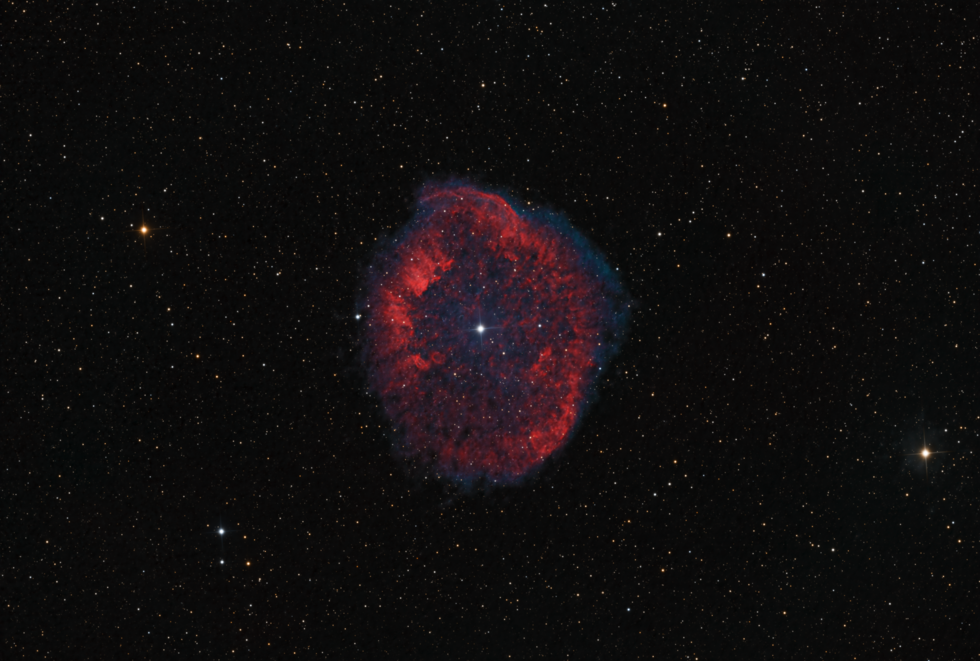RCW58 and WR40 in Carina
RCW58 and WR40 in Carina
The central star in the image has the classification of WR40 (Wolf-Rayet 40), one of a 'pack' of such stars identified up to now. Possibly the best known of such stars being WR136 in the Crescent nebula.
These stars are nearing end of life and eject their outer layers of hydrogen and other elements forming a ring-like structure around them. In this case the ring-like structure is named RCW58.
Some of these nebula are very strong in hydrogen masking out other emissions, however, as can be seen in the image there has been a fair amount of oxygen ejected as well.
A question about these Wolf-Rayet stars asked on Quora was, "If we replaced the Sun with a Wolf-Rayet star, what would life be like on Earth?". This received a brief and amusing response of ,"In a word: extinct." A fuller explanation followed stating that if the Earth's position relative to the star remained the same, then 'oceans would boil, etc'. Do I recall hearing something along those lines about Earth recently from the UN?
This was a nice set of data to process particularly so given the additional data captured recently. Images posted by others in the past had much less data available to them. Maybe they might consider adding the new data.
These stars are nearing end of life and eject their outer layers of hydrogen and other elements forming a ring-like structure around them. In this case the ring-like structure is named RCW58.
Some of these nebula are very strong in hydrogen masking out other emissions, however, as can be seen in the image there has been a fair amount of oxygen ejected as well.
A question about these Wolf-Rayet stars asked on Quora was, "If we replaced the Sun with a Wolf-Rayet star, what would life be like on Earth?". This received a brief and amusing response of ,"In a word: extinct." A fuller explanation followed stating that if the Earth's position relative to the star remained the same, then 'oceans would boil, etc'. Do I recall hearing something along those lines about Earth recently from the UN?
This was a nice set of data to process particularly so given the additional data captured recently. Images posted by others in the past had much less data available to them. Maybe they might consider adding the new data.
SPECIFICATIONS
Telescope
Planewave CDK24
Camera
QHY 600M Pro
Location
Rio Hurtado, Chile
Date of observation
April and June 2023 and April 2024
Filters
Astrodon HOS
Processing
PixInsight RC Astro tools and Photoshop
Credits
Telescope Live


